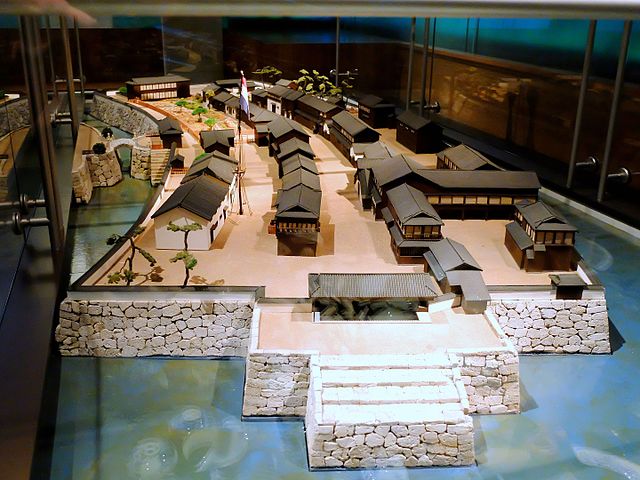Kawahara Keiga was a late Edo period Japanese painter of plants, fishes, birds, reptiles, crustaceans, social scenes, landscapes and portraits at the Dutch Factory of Dejima, and at Edo, Kyoto and Nagasaki. His works can be found in museums in Japan and in the Netherlands, among others.
Dutchmen with a servant, Kawahara Keiga, around 1820-1830.
Pagrus major (Red seabream), by Kawahara Keiga, 1823-1829
Carmichael’s Monkshood (Aconitum napellus, Aconitum carmichaelii, Aconitum japonicum subsp. napiforme?)
Common mallow (Malva sylvestris)
Dejima or Deshima, in the 17th century also called Tsukishima, was an artificial island off Nagasaki, Japan that served as a trading post for the Portuguese (1570–1639) and subsequently the Dutch (1641–1854). For 220 years, it was the central conduit for foreign trade and cultural exchange with Japan during the isolationist Edo period (1600–1869), and the only Japanese territory open to Westerners.
An imagined bird's-eye view of Dejima's layout and structures (copied from a woodblock print by Toshimaya Bunjiemon of 1780 and published in Isaac Titsingh's Bijzonderheden over Japan (1824/25)
A 2017 model of Dejima in the Museum Volkenkunde in Leiden
Dejima and Nagasaki Bay, circa 1820. Two Dutch ships and numerous Chinese trading junks are depicted.
A view of Dejima island in Nagasaki Bay (from Siebold's Nippon, 1897)








